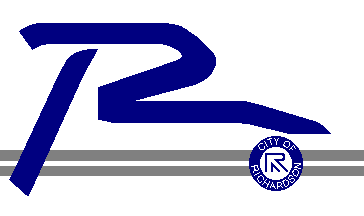Richardson Area Tree Service - Complete Arborist Services
Tree Removal - Tree Trimming - Stump Grinding - and so much more!


Richardson Tree Care
Think of tree care as an investment. A healthy tree increases in value with age and pays big dividends by increasing property values, beautifying our surroundings, purifying our air, and saving energy by providing cooling shade from summer’s heat and protection from winter’s wind.
Regular preventative maintenance, designed to promote tree health and structural integrity, ensures a tree’s value will continue to grow and prevents the development of more costly problems in the future. An effective maintenance program, including regular inspections and necessary follow-up care — pruning, mulching, fertilizing, and additional soil management — can identify problems and correct them before they become damaging or fatal.
Tree Inspections:
Regular tree inspections can catch changes in a tree’s health before a disease, insect, or environmental problem becomes too serious to address. Ideally, mature trees should be inspected at least once a year to assess four characteristics of tree vitality: new leaf or bud formation, leaf size, twig growth, and absence of crown dieback (gradual death of the upper part of the tree).
Growth reduction is a fairly reliable cue that the tree’s health has recently changed. An experienced arborist can look at twig growth from past years to determine whether there is a reduction in the tree’s typical growth pattern.
Further signs of poor tree health are trunk decay, crown dieback, or both. These symptoms often indicate problems that began several years before. Loose bark, deformed growths, and conks (mushrooms) are common signs of stem decay.
Any abnormalities found during these inspections, such as insect activity and/or spotted, deformed, discolored, or dead leaves and twigs, should be noted and monitored closely. If you are uncertain about what to do, report your findings to your local ISA Certified Arborist or other tree care professional for advice on treatment options.
Mulching:
Mulching can reduce environmental stress by providing trees with a more moderate root environment that has fewer temperature and moisture extremes than the surrounding soil. Mulch reduces competition from weeds and grass and prevents mechanical damage by keeping lawn care equipment away from the tree’s base. Mulches made from plant matter, such as shredded leaves, pine straw, peat moss, or composted wood chips, will add nutrients to the soil as they decompose and help improve overall soil biology. To be most effective, mulch should be placed 2 to 4 inches (5 to 10 cm) deep and cover as much of the root system as possible. (Roots can extend as far as 2 or 3 times the diameter of the branch spread of the tree.) When placing mulch, care should be taken not to cover the actual trunk of the tree. A mulch-free area around the base that is 1 to 2 inches (2.5 to 5 cm) wide is sufficient to avoid overly moist bark conditions.
Soil Management:
Soil management is another important aspect of mature tree care. Urban landscape trees often exist in soils that lack the nutrients, pH (acidity or alkalinity), drainage, or pore space (air and water space) needed for growth and development. Proper fertilization based on plant needs can correct many deficiencies that limit growth. Sometimes soil nutrients may be sufficient, but soil pH levels may prevent plant uptake. In this case, soil amendments, such as sulfur, lime, and even some mulches, can alter soil chemistry and help alleviate plant stress.
Drainage systems or grading can help correct saturated soil conditions, although trenching or earthmoving activities within the tree’s root zone may cause more harm than good. Compacted soils can be tilled mechanically or with compressed air to increase porosity and encourage root growth. Care must be taken when loosening soil under the drip zone to avoid root damage.
When dealing with a mature tree that provides considerable benefit and value to your landscape, it is worth the time and investment to have the soil tested for nutrient content and texture. An arborist can arrange to have your soil tested at a soil testing laboratory and recommend treatments based on the results.
Pruning:
Pruning is often desirable or necessary to remove dead, diseased, or insect-infested branches and to improve tree structure, enhance vitality, or reduce risk. While pruning has many benefits, the removal of live branches creates a lasting wound. No branch should be removed without a reason. The removal of large limbs on a mature tree requires careful consideration.
Pruning large trees requires special equipment, training, and experience. If the pruning work requires climbing, the use of a chain or hand saw, or the removal of large limbs, the use of personal safety equipment, such as protective eyewear and hearing protection, is a must. Arborists can assist in performing the job safely and reducing the risk of personal injury and damage to your property. They can also determine which type of pruning is necessary to maintain or improve the health, appearance, and safety of your trees.
Removal:
Although tree removal is a last resort, there are circumstances when it is necessary. Professionally trained arborists can help decide whether or not a tree should be removed and possess the skills and equipment to safely and efficiently remove trees. Removal is recommended when a tree:
• is dead, dying, or considered irreparably hazardous
• is causing an obstruction or is crowding and causing harm to other trees and the situation is impossible to correct through pruning
• is to be replaced by a more suitable specimen
• should be removed to allow for construction
With proper maintenance, trees can add aesthetic and economic value to your property. Poorly maintained trees, on the other hand, can be a significant liability. For more information on mature tree care, contact your local ISA Certified Arborist.





